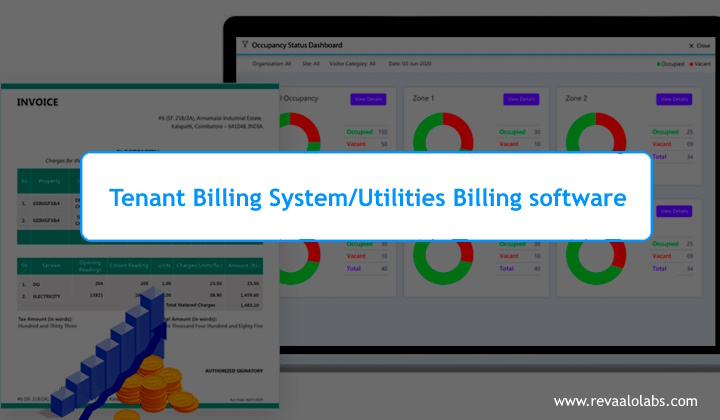#Nginx #Webserver
-1692617828.jpg)
It is more important than ever to improve the performance of web applications. Over 5% of the developed world`s economy is now conducted online; more than 5% of the world`s economy is conducted online. And our always-on, hyper-connected modern world means that user expectations are higher than ever. Users will quickly move on to your competitors if your site or app does not respond instantly.
It is easy to want to improve performance, but it is harder to see the results of those efforts.
The following tips can help you improve your website`s performance your journey.
Tip-1: Add a Load Balancer
Your site`s performance and security can be dramatically improved by adding a load balancer. The load balancer distributes traffic across multiple servers rather than making a single web server bigger and more powerful. Even if an application is poorly written, or has problems with scaling, a load balancer can improve the user experience without any other changes.
First of all, a load balancer is a reverse proxy server that receives Internet traffic and forwards it to another server. Using a variety of algorithms, the load balancer splits requests between two or more application servers. The simplest load balancing approach is round robin, with each new request sent to the next server on the list. Other methods include sending requests to the server with the fewest active connections. The session persistence feature of NGINX Plus allows users to continue their sessions on the same server.
Protocols that can be load balanced include HTTP, HTTPS, SPDY, HTTP/2, WebSocket, FastCGI, SCGI, uwsgi, memcached, and several other application types, including TCP-based applications and other Layer 4 protocols. Analyze your web applications to determine which you use and where performance is lagging.
As well as load balancing, the same server or servers can also handle SSL termination, support for HTTP/1/x and HTTP/2, and static file caching.
Tip-2: Accelerate and Secure Applications with a Reverse Proxy Server
When your web application runs on a single machine, the solution might seem obvious: just upgrade to a faster machine with more processors, more RAM, a faster disk array, etc. With the new machine, your WordPress server, Node.js application, Java application, etc., will run faster.
Trouble is, machine speed might not be the problem. Web applications often run slowly because the computer is switching among different kinds of tasks: interacting with users on thousands of connections, accessing files from disk, and running application code, among others. Instead of upgrading your hardware, you can take an entirely different approach: adding a reverse proxy server to offload some of these tasks.
Reverse proxy servers also add flexibility to web server configurations. If a server of a particular type is overloaded, another of the same type can easily be added; if a server is down, it can easily be replaced.
Because of the flexibility it provides, a reverse proxy server is also a prerequisite for many other performance-boosting capabilities, such as:
Load balancing:A load balancer runs on a reverse proxy server to share traffic evenly across a number of application servers. With a load balancer in place, you can add application servers without changing your application at all.
Caching static files:Files that are requested directly, such as image files or code files, can be stored on the reverse proxy server and sent directly to the client, which serves assets more quickly and offloads the application server, allowing the application to run faster.
Securing your site:The reverse proxy server can be configured for high security and monitored for fast recognition and response to attacks, keeping the application servers protected.
Tip-3: Compress Data
Performance can be greatly enhanced by compression. In addition to photos (JPEG and PNG), videos (MPEG-4), and music (MP3), there are carefully engineered and highly effective compression standards. Each of these standards reduces file size by an order of magnitude or more.
HTML (which includes plain text and HTML tags), CSS, and JavaScript code are often transmitted uncompressed. Especially for clients with slow or constrained mobile connections, compressing this data can have a disproportionate impact on perceived performance.
Because text data is often sufficient for users to interact with a page, while multimedia data may be more supportive or decorative. HTML, Javascript, CSS, and other text-based content can be compressed intelligently to reduce bandwidth requirements by 30% or more and load times by a corresponding amount.
Tip-4: Cache Static and Dynamic Content
Using caching, you can improve the performance of your web applications by delivering content to clients more quickly. The caching of content can be implemented in several ways: preprocessing content for fast delivery, storing content on faster devices, or storing content closer to the client.
There are two different types of caching to consider:
If a page receives ten views per second, for example, and you cache it for one second, 90% of the requests for the page will come from the cache. Even freshly generated versions of the page might contain a large amount of cached content if you cache static content separately
There are three main techniques for caching content generated by web applications:
In many web pages, static data, such as large image files, makes up more than half of the content. It might take several seconds to retrieve and transmit such data without caching, but only fractions of a second if the data is cached locally.
Tip-5: Optimize SSL/TLS
Increasingly, websites use the Secure Sockets Layer (SSL) and its successor, Transport Layer Security (TLS). SSL/TLS encrypts the data sent from the origin server to the user. This improves the security of the site. The presence of SSL/TLS may be influencing this trend in part because Google now uses SSL/TLS as a ranking factor.
Despite rising popularity, the performance hit involved in SSL/TLS is a sticking point for many sites. SSL/TLS slows website performance for two reasons:
The authors of HTTP/2 and SPDY designed these protocols so that browsers require only one connection per browser session in order to encourage the use of SSL/TLS. As a result, one of the two major sources of SSL overhead is greatly reduced. In spite of this, there is still much that can be done today to improve the performance of SSL/TLS-enabled applications.
SSL/TLS optimization varies from web server to web server. As an example, NGINX uses OpenSSL, running on standard commodity hardware, to provide performance similar to dedicated hardware solutions. SSL/TLS encryption and decryption performance in NGINX is well documented and minimizes CPU and time penalties.
Hope you liked it. If you have any requirement related to Nginx with your platforms feel free to connect with Revaalo labs your one stop solution for Digital Transformation needs.

One of the most critical decisions website developers must make is deciding what unit of measurement to use when sizing elements, fonts, and other design properties.
Read more
It`s an amazing technology-one that will help us solve society`s toughest problems and reshape the world.
Read more13
December

Today, web browsers play a significant role in our lives, providing us with access to a world of information and possibilities.
Read more
Power BI is a popular business intelligence tool developed by Microsoft for data visualization and analysis. While Power BI is a robust solution, there are several alternatives available that cater to different needs and preferences.
Read more09
October

Tenant billing systems are software solutions used by property owners, managers, and landlords to accurately bill tenants for their usage of utilities and services.
Read more